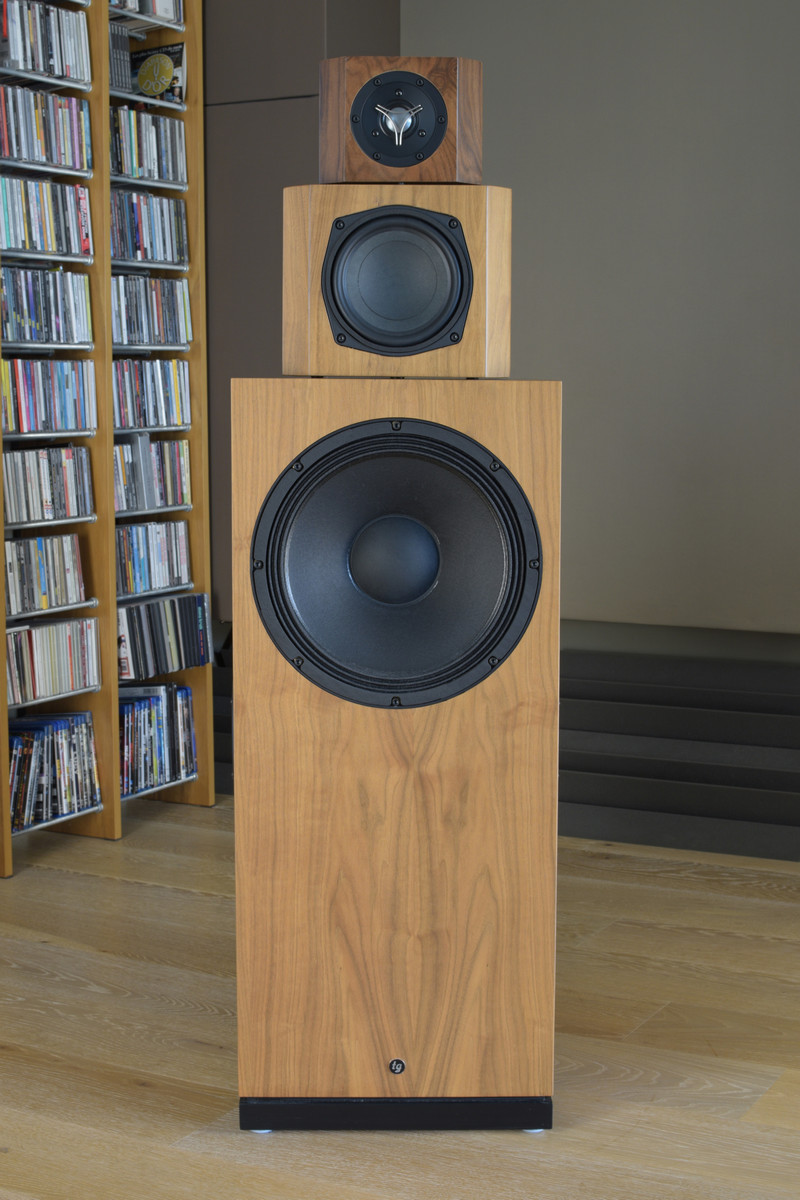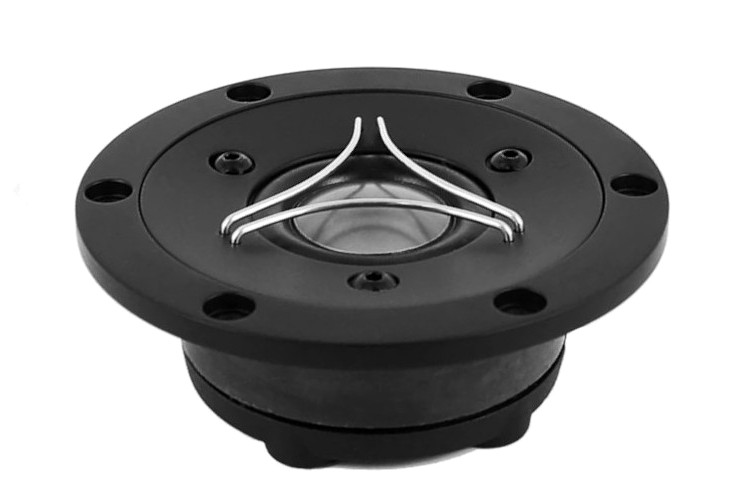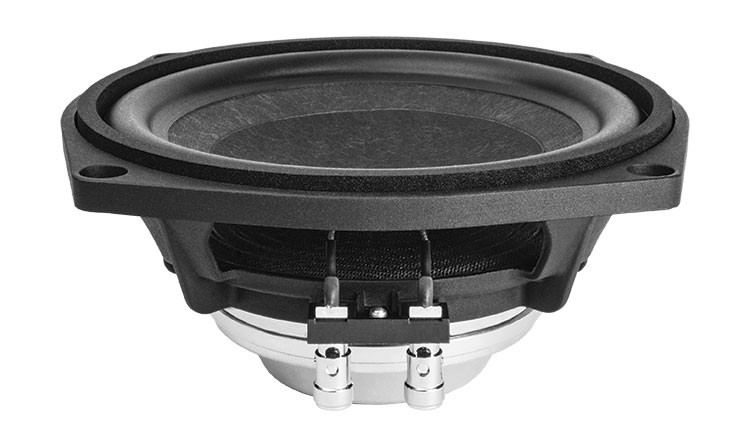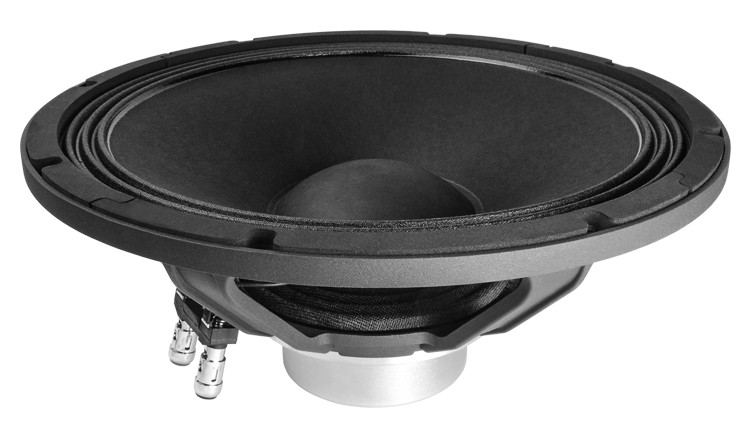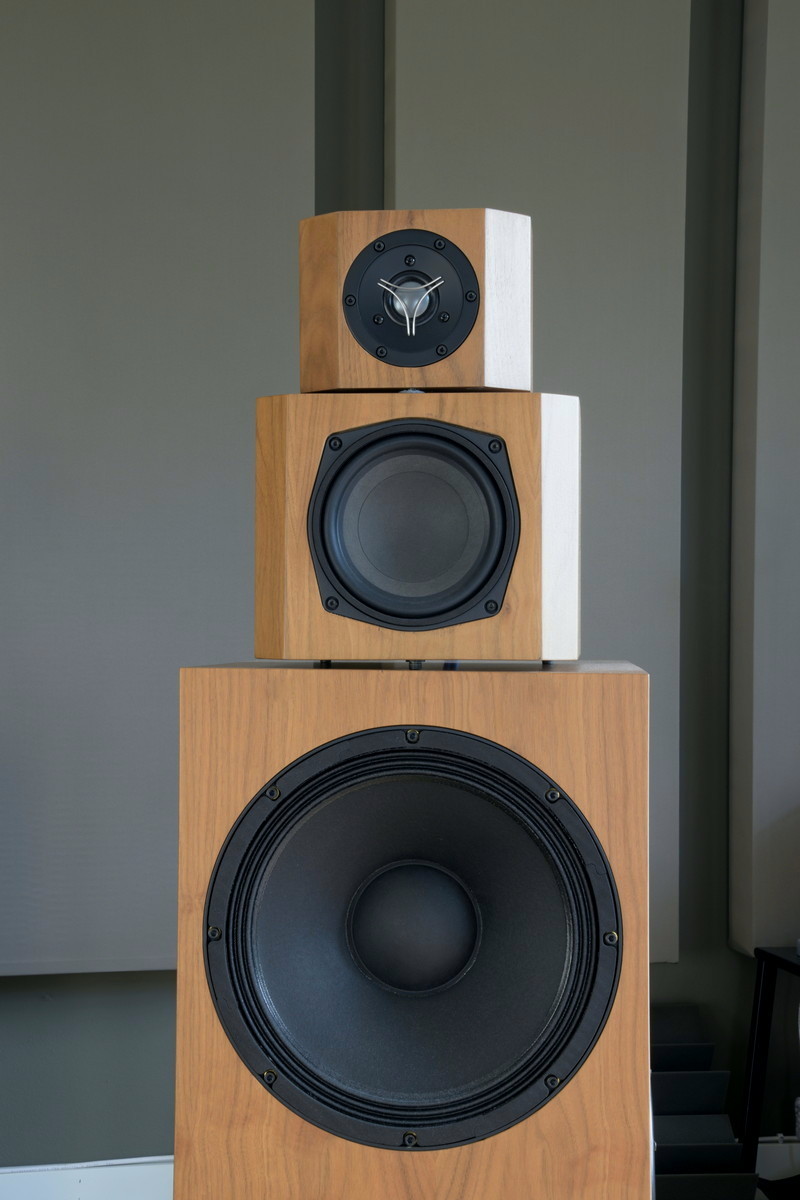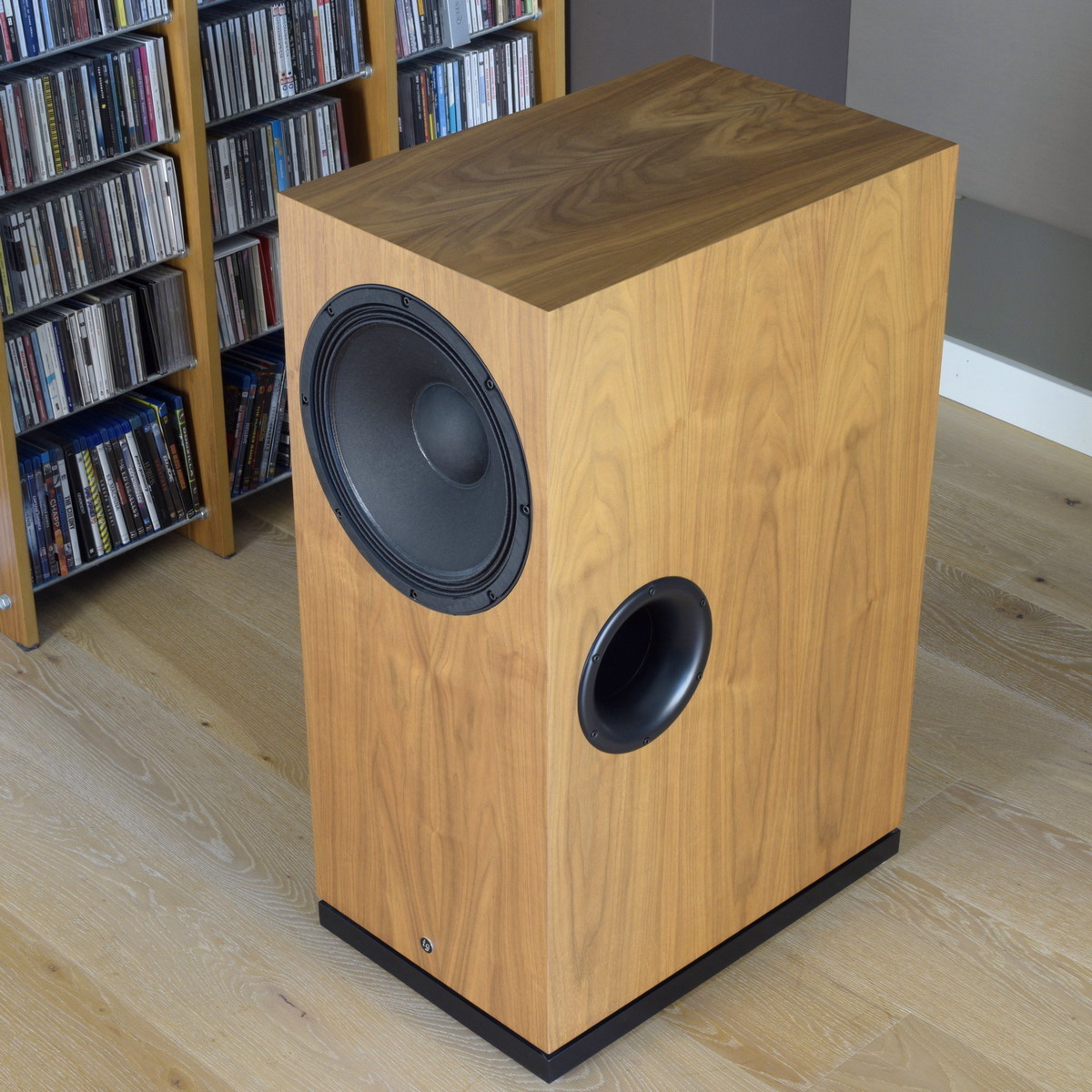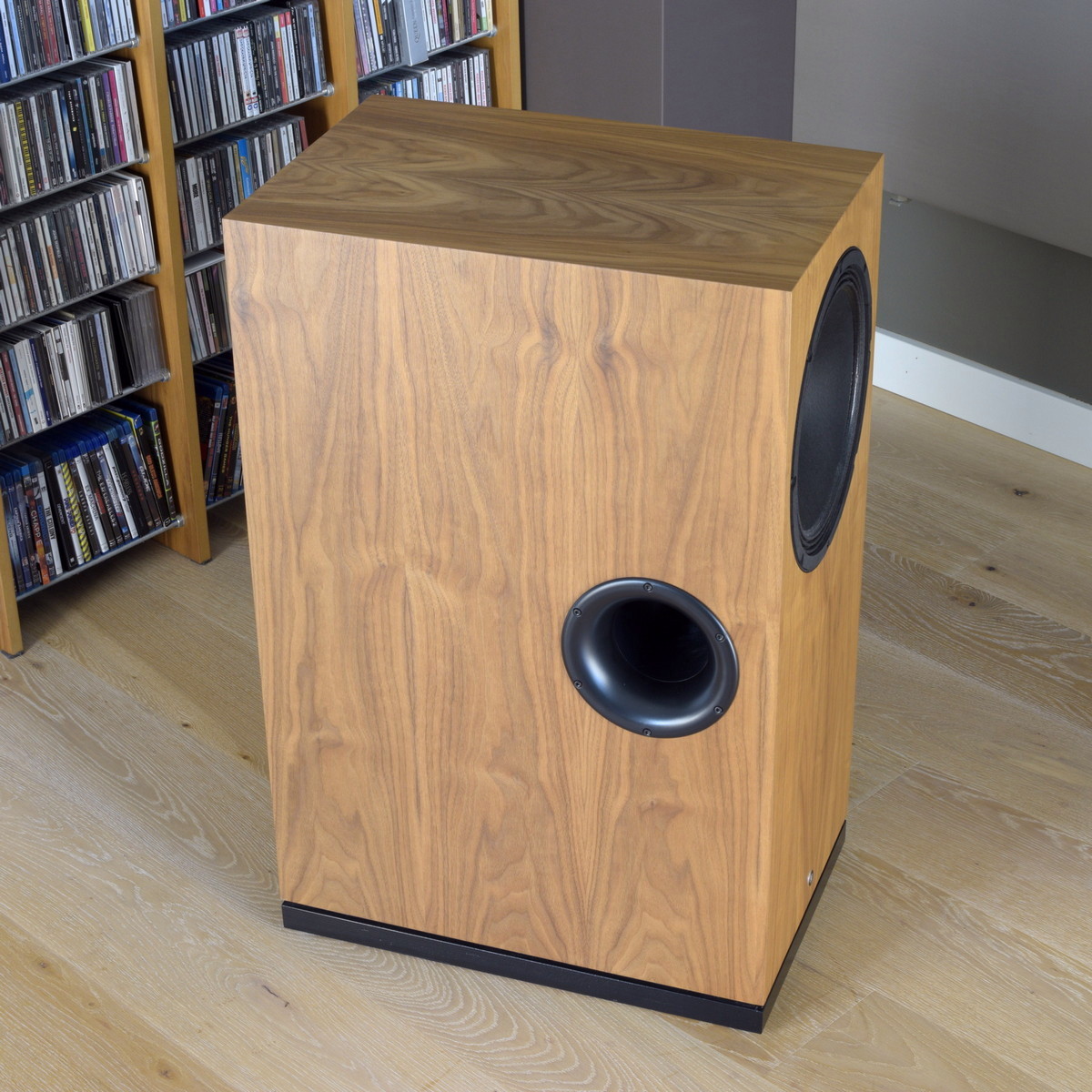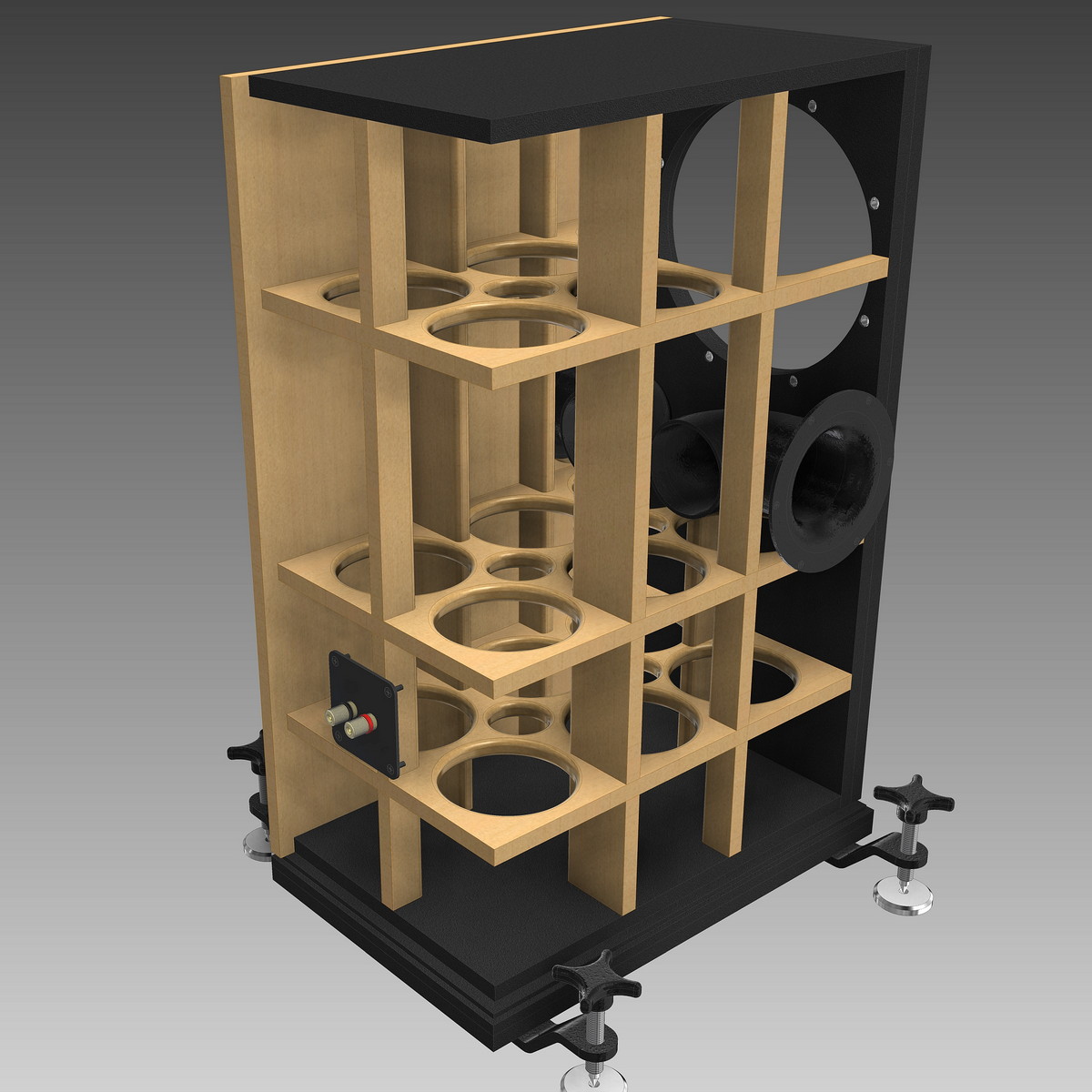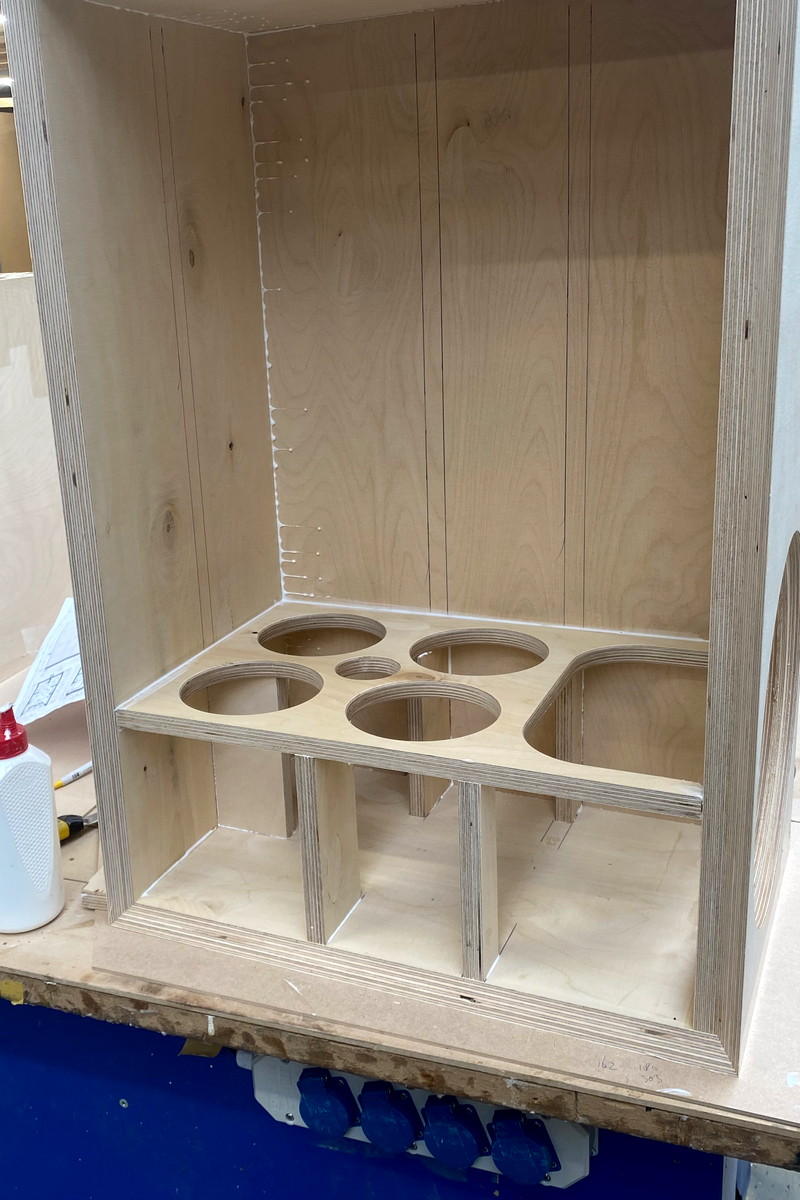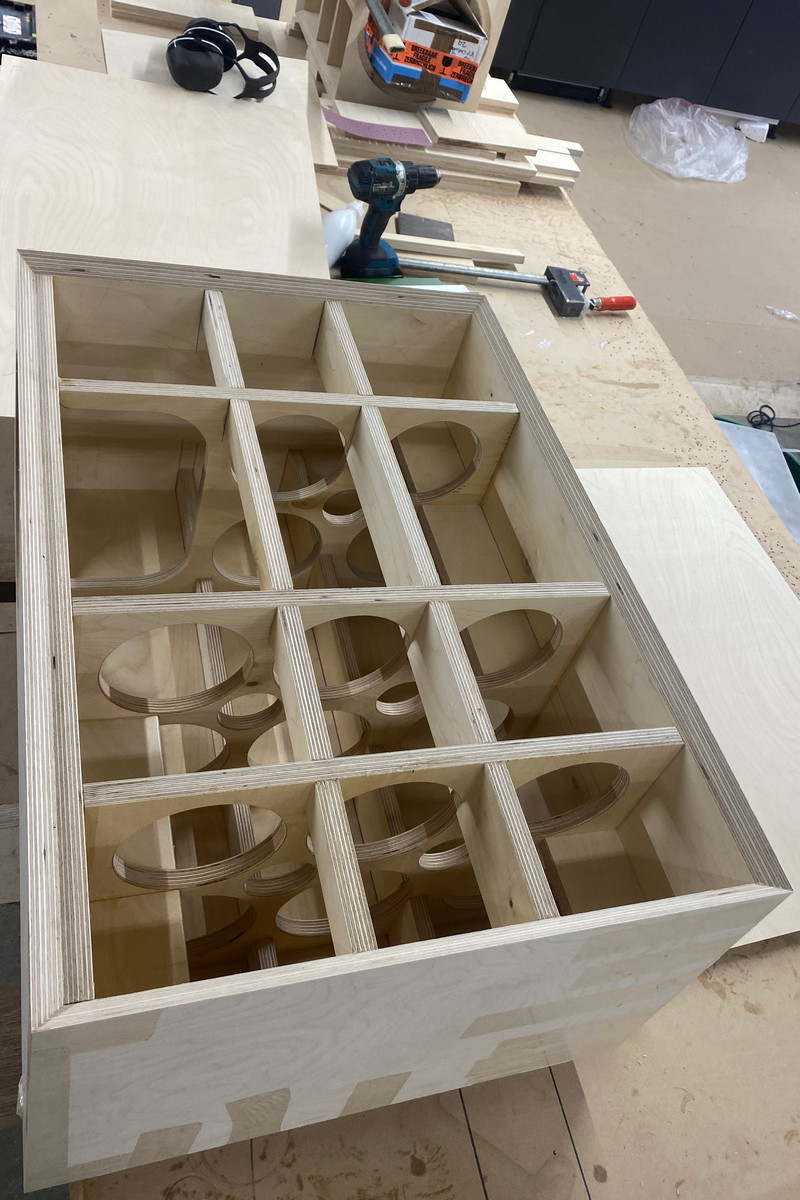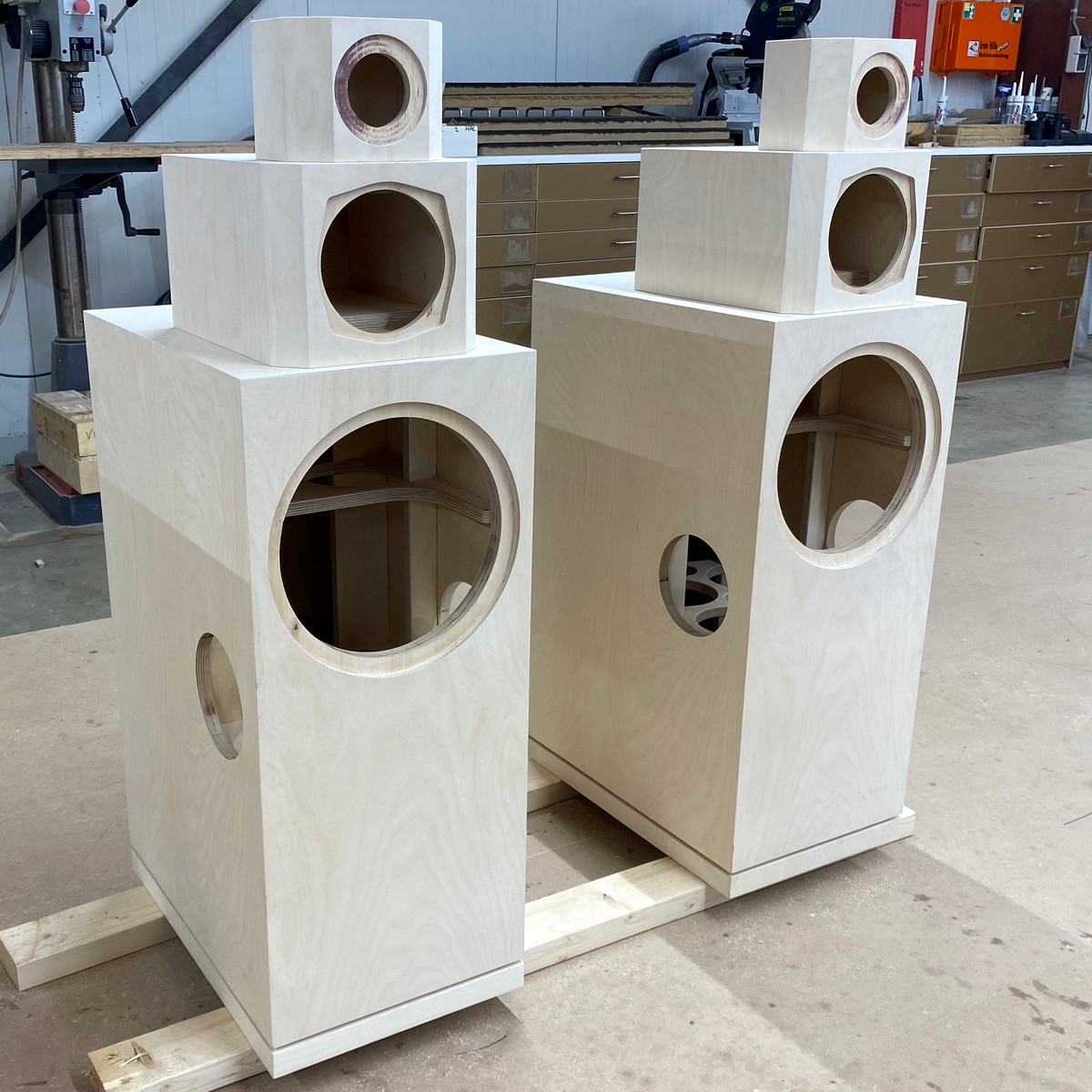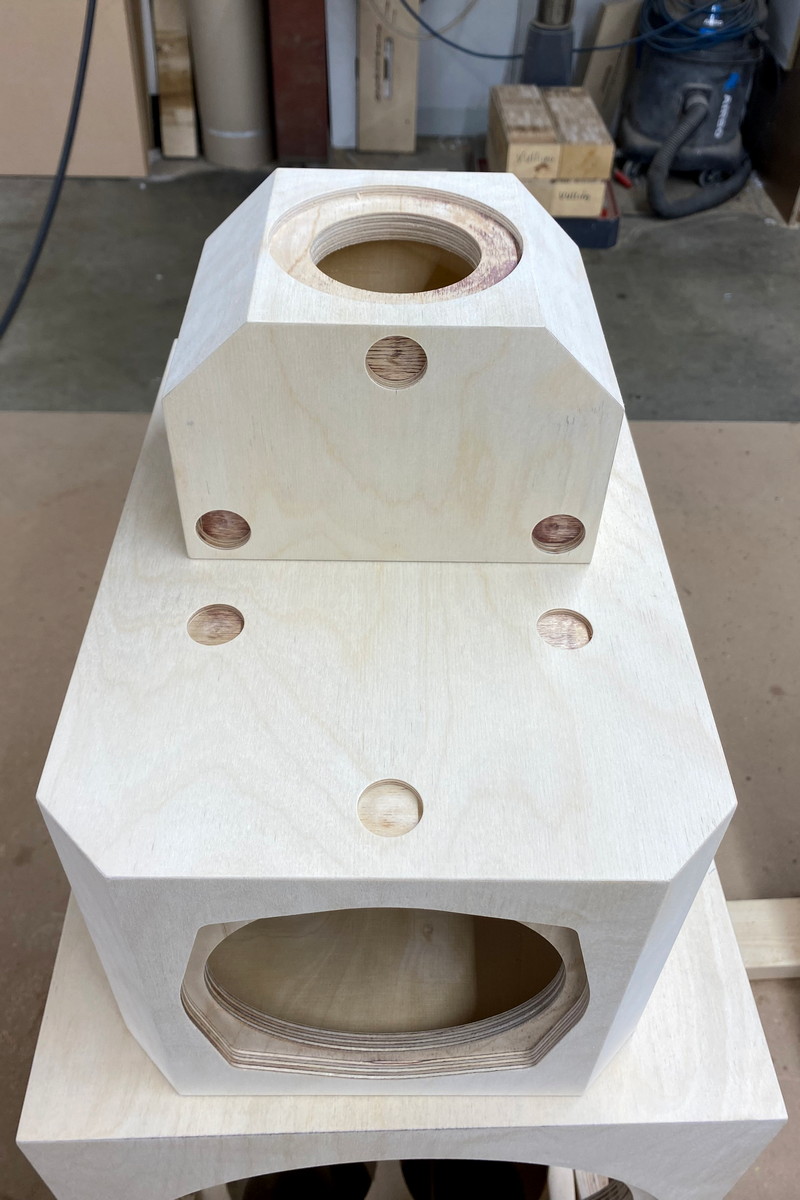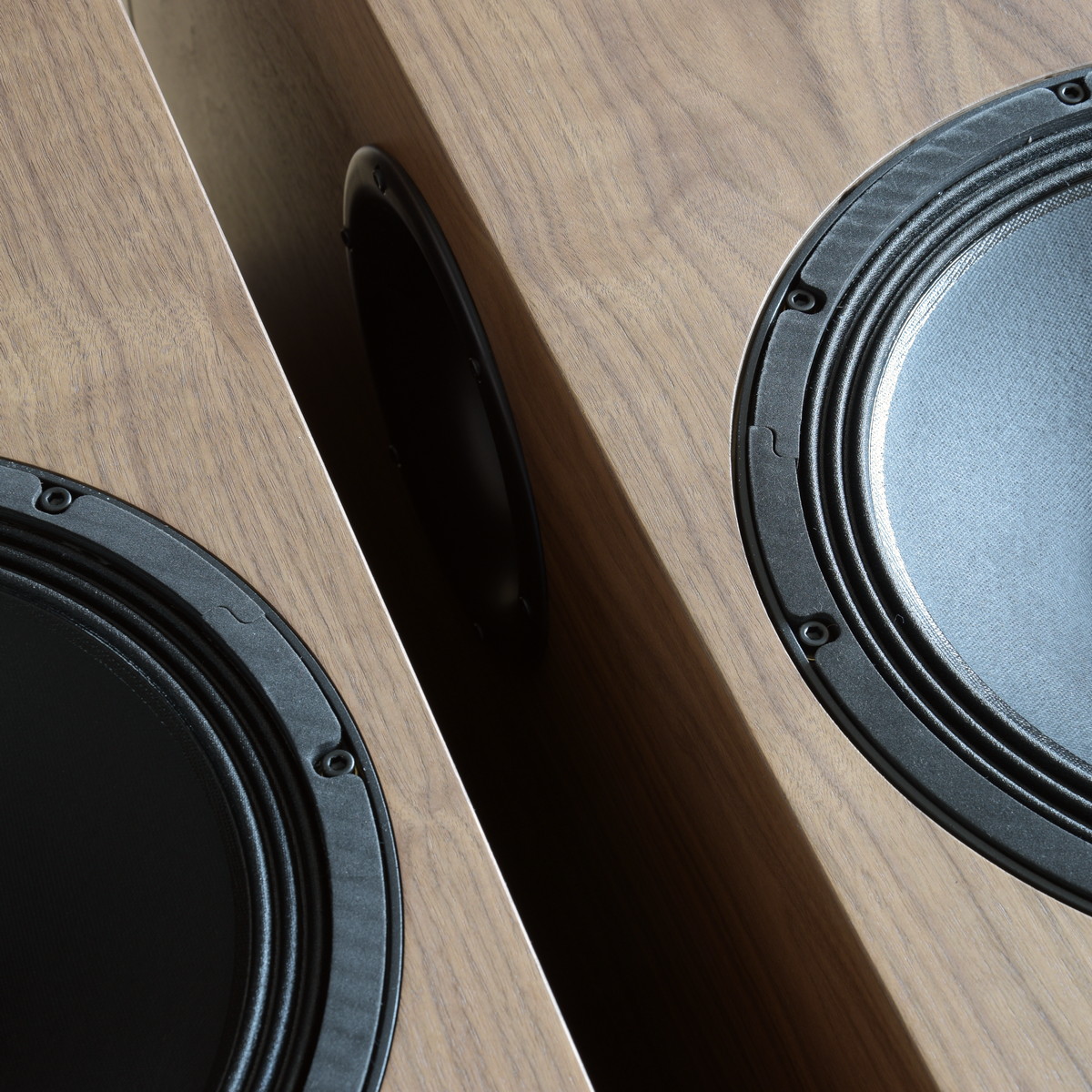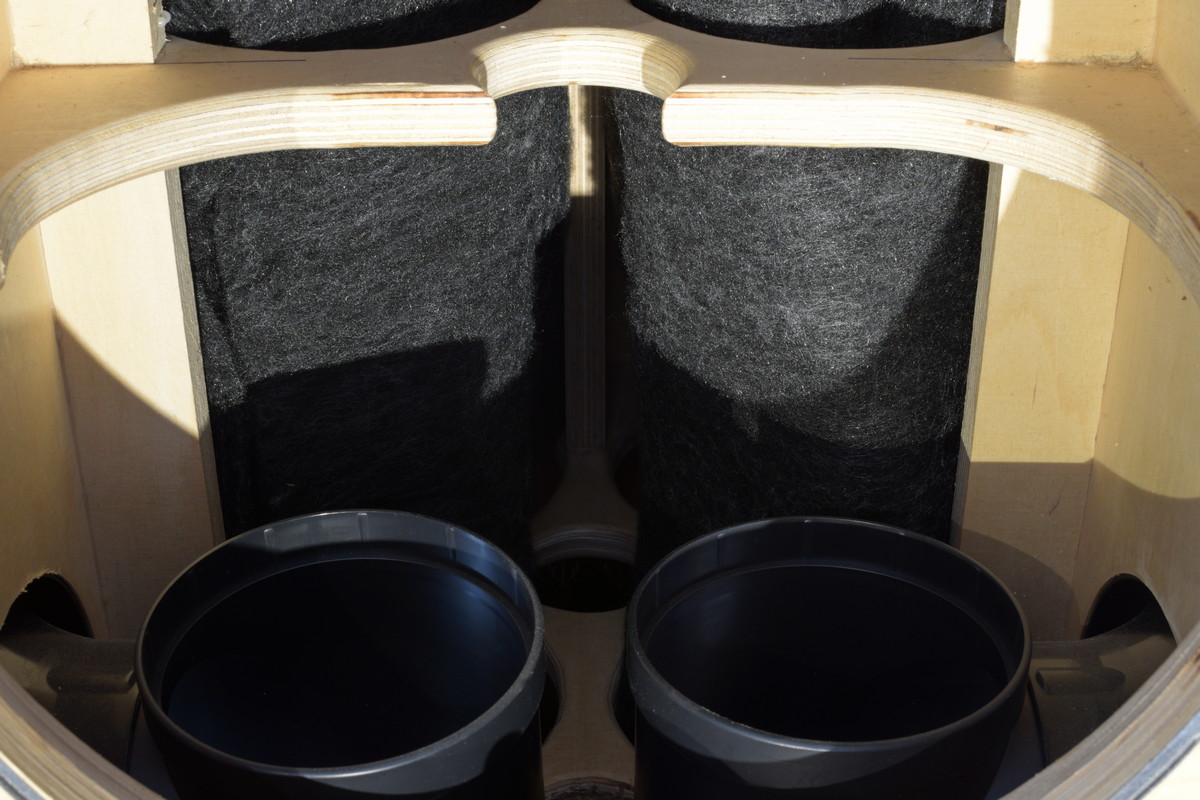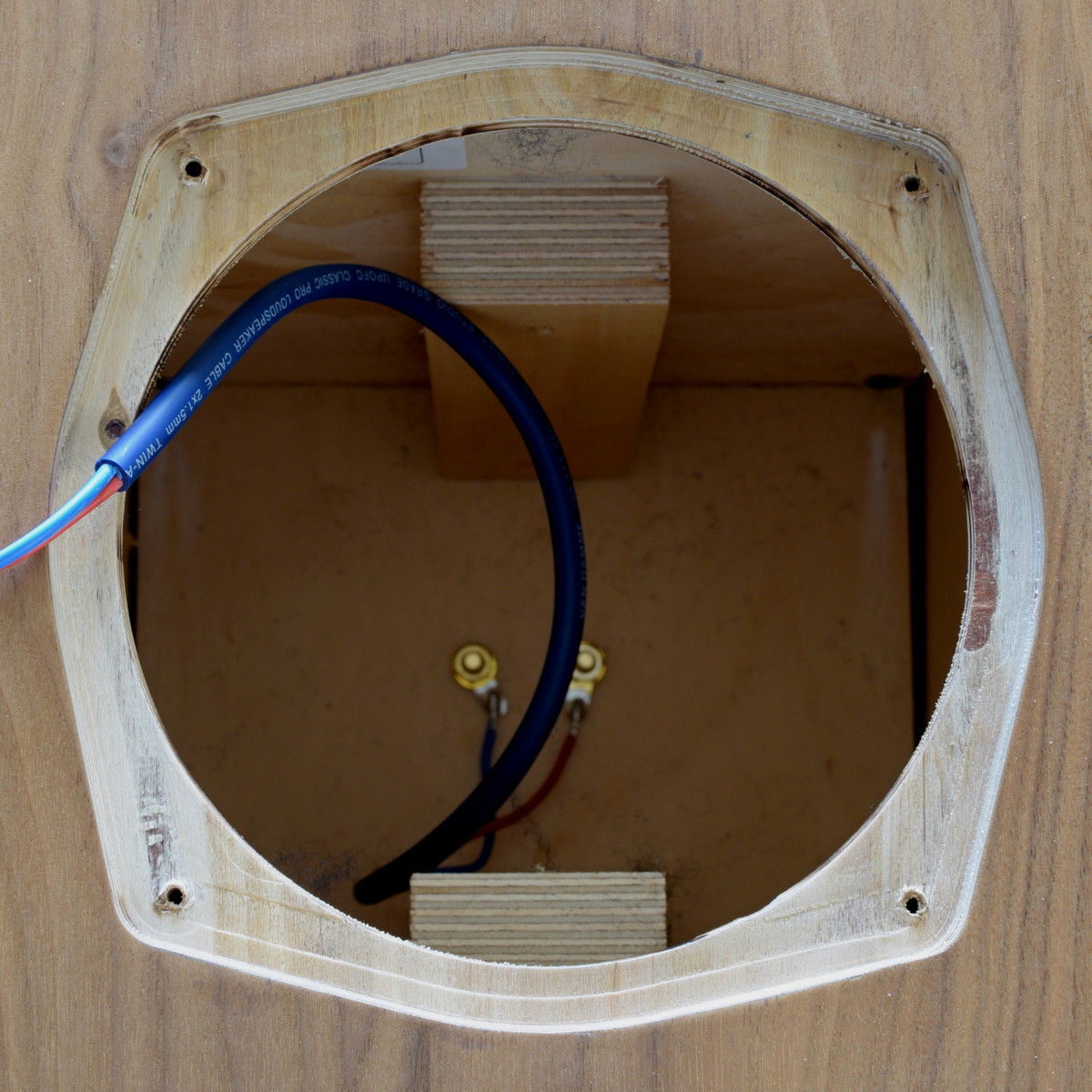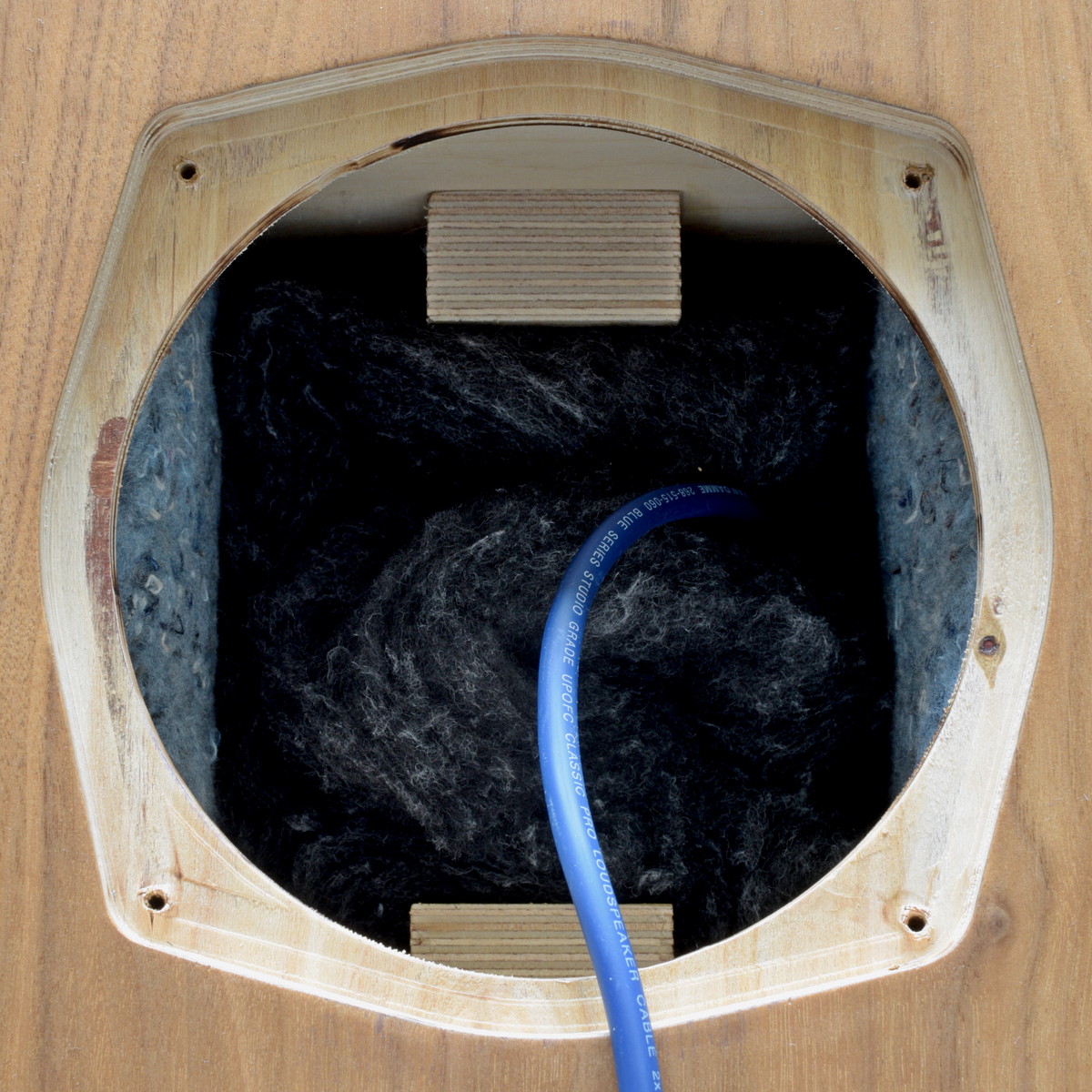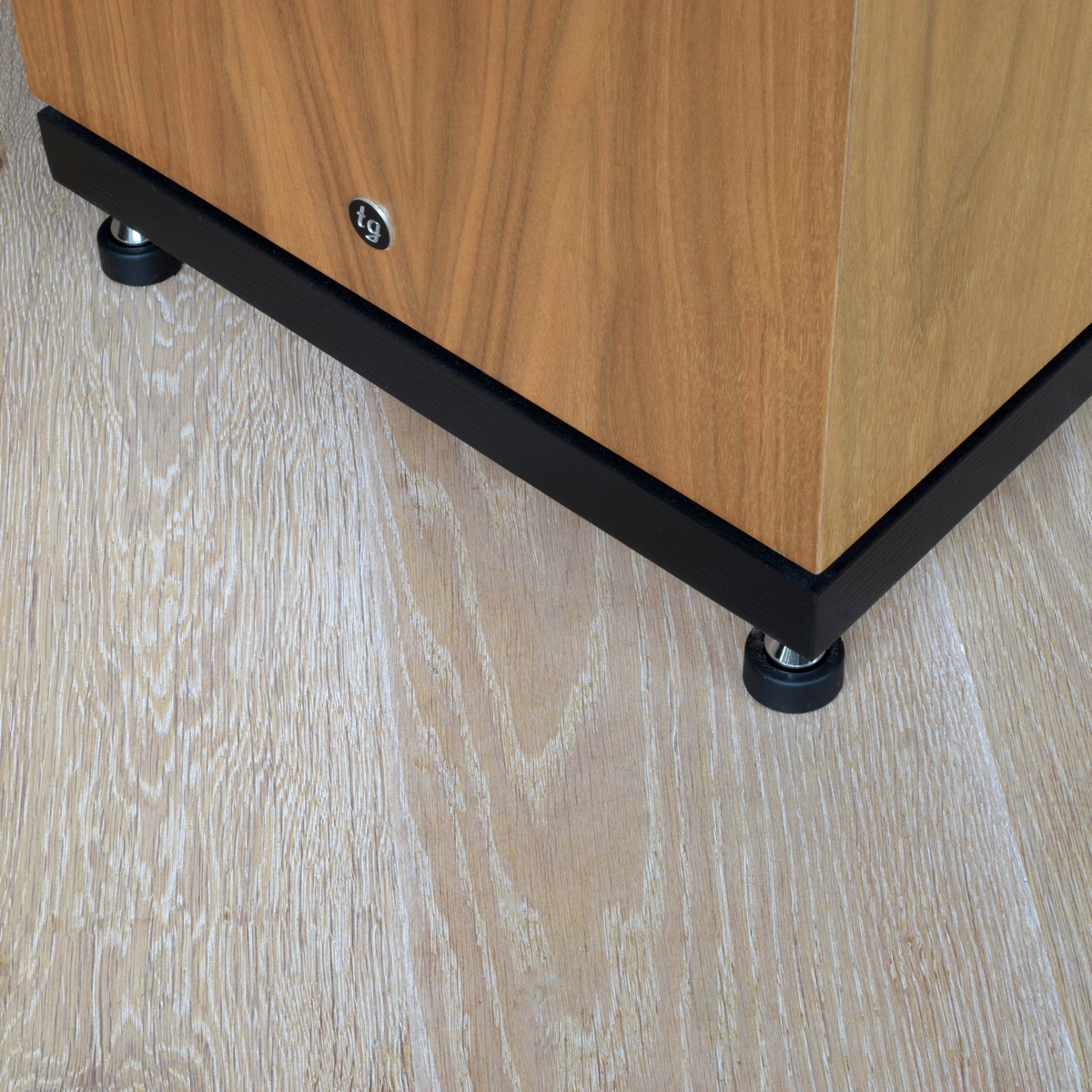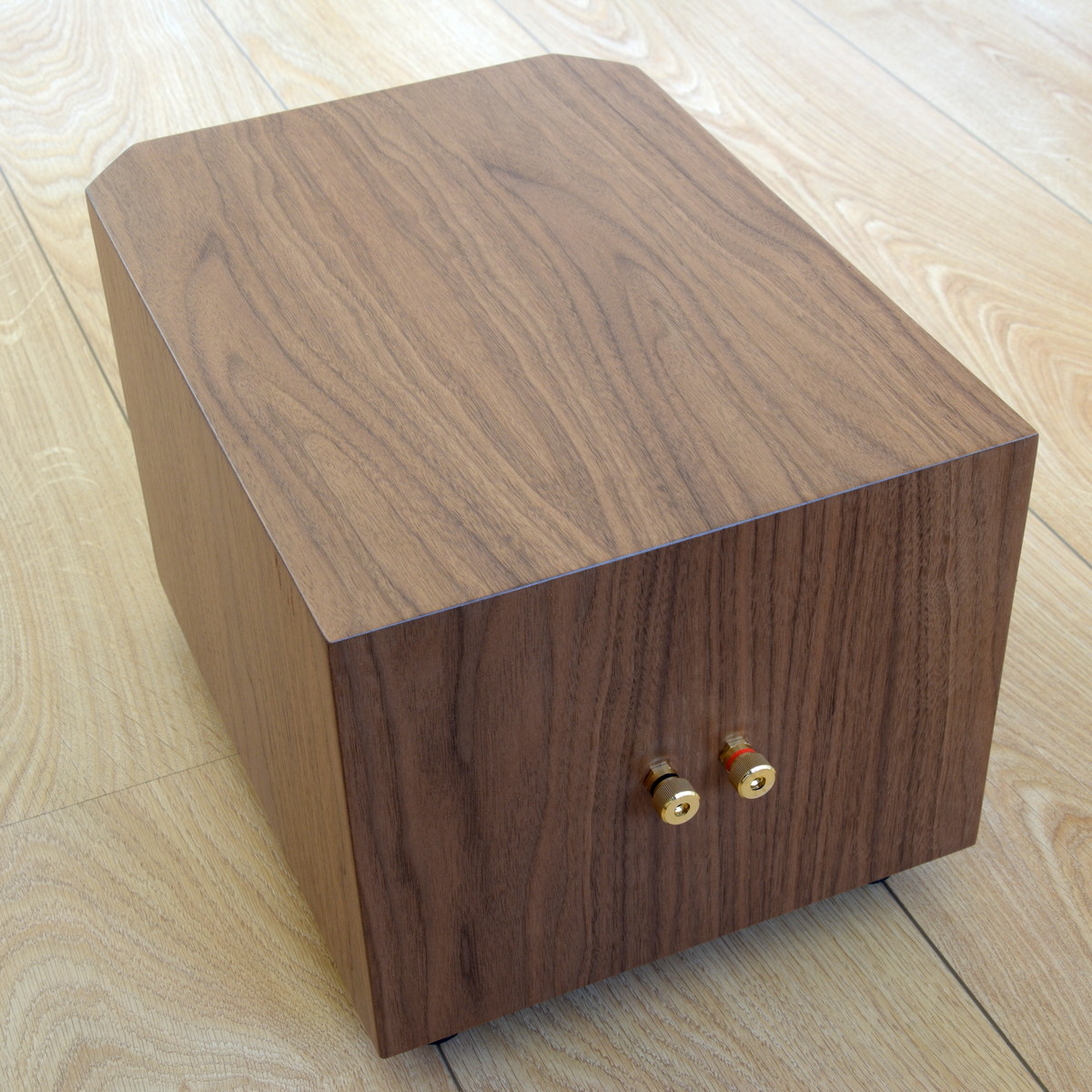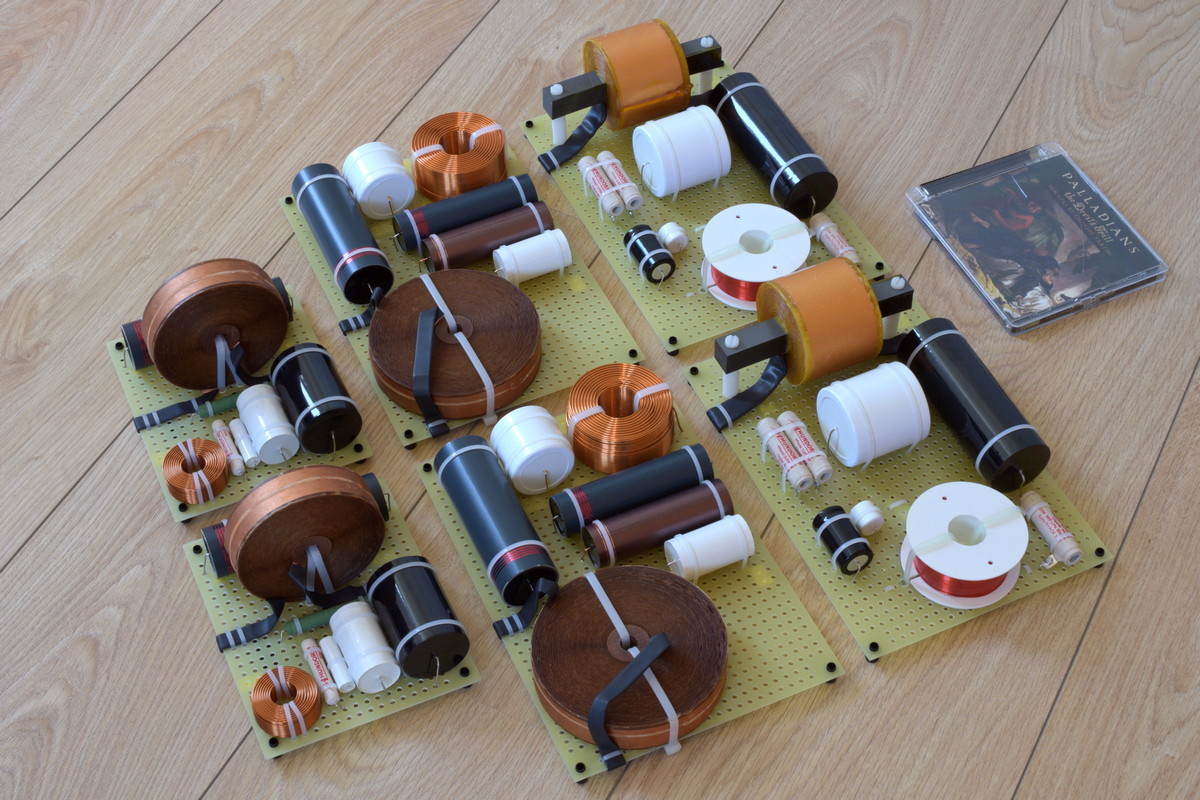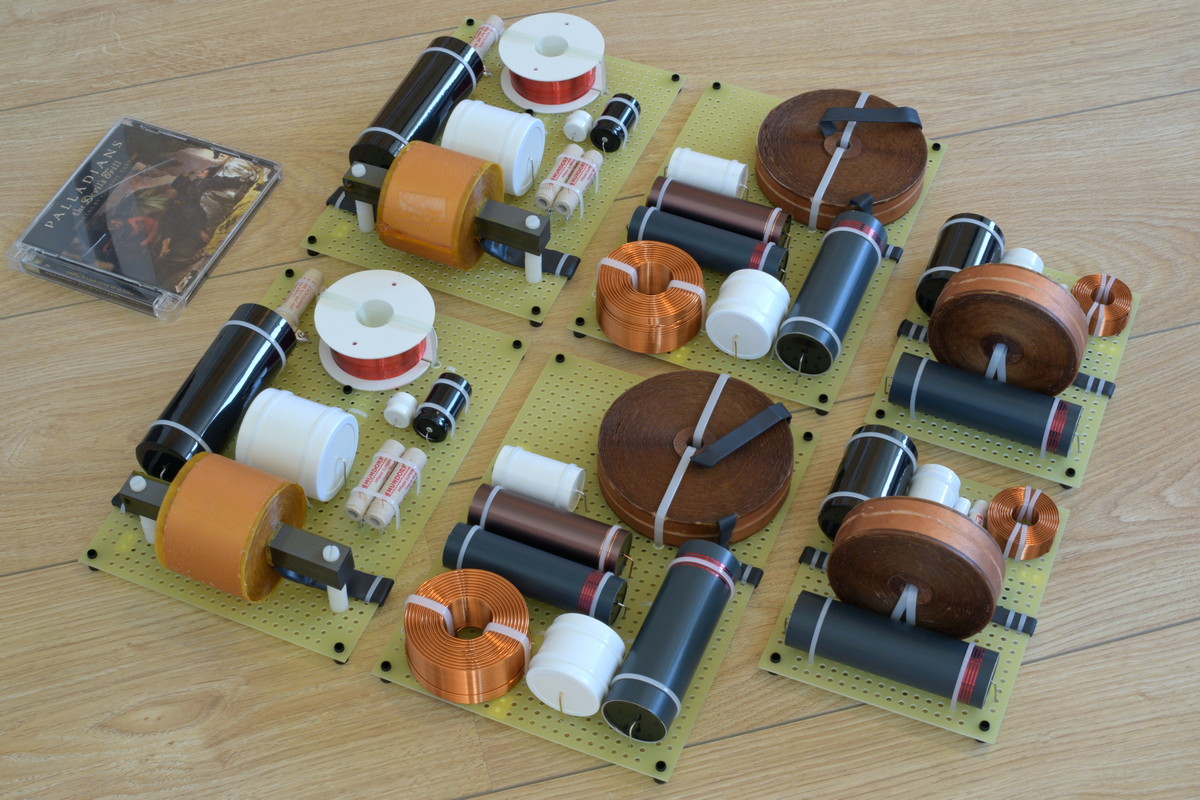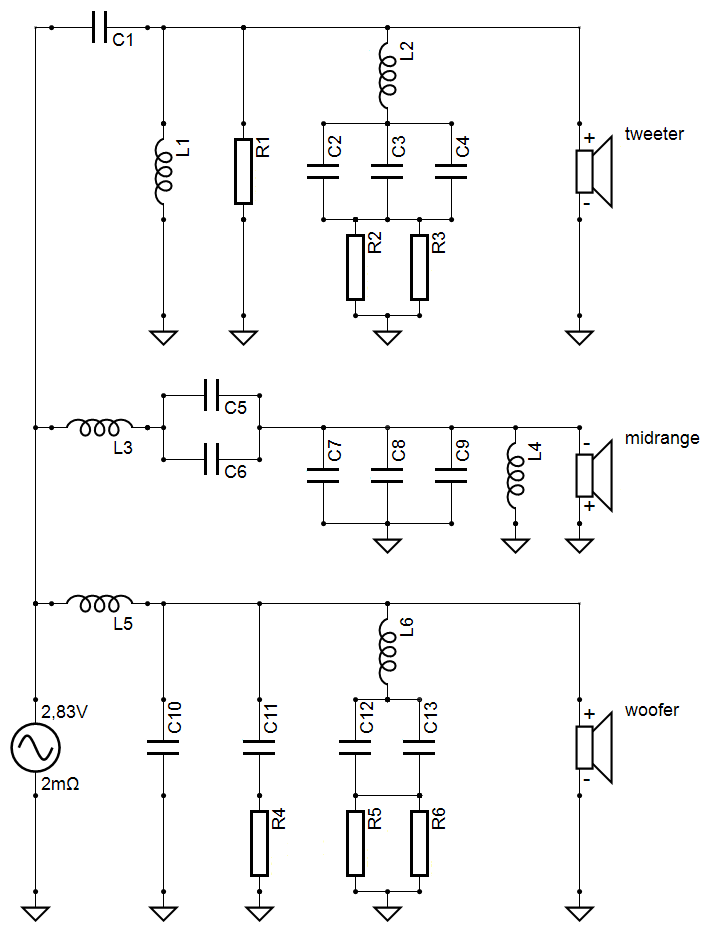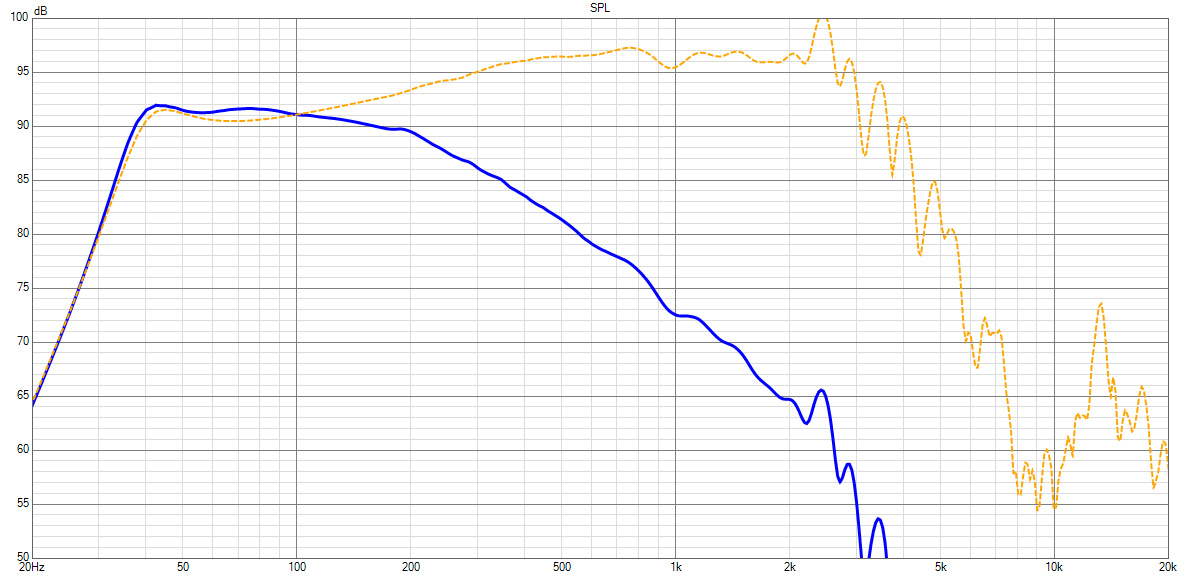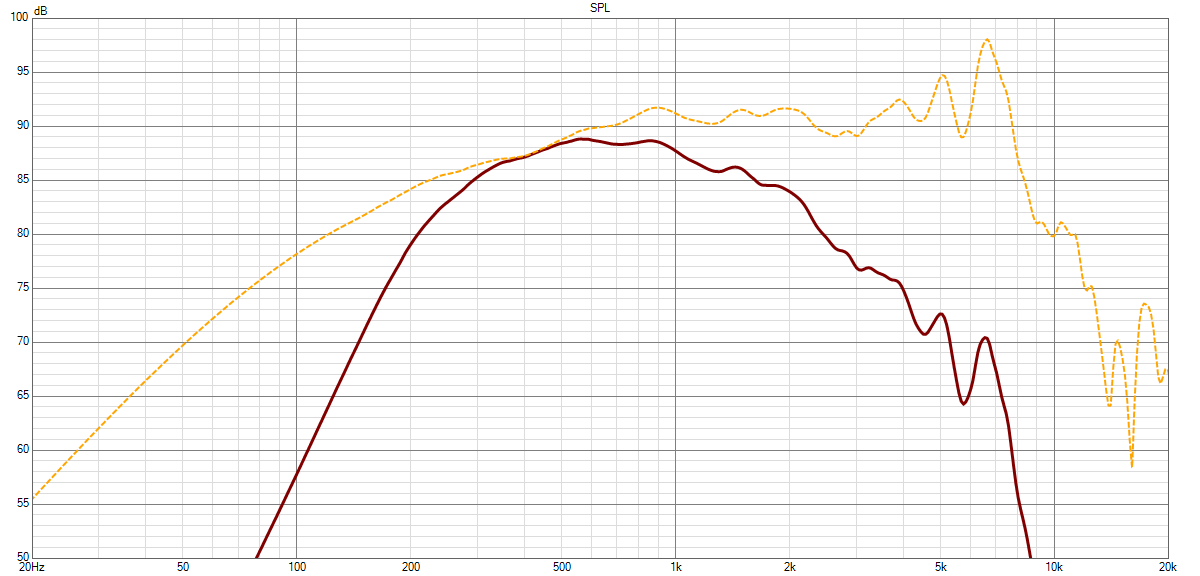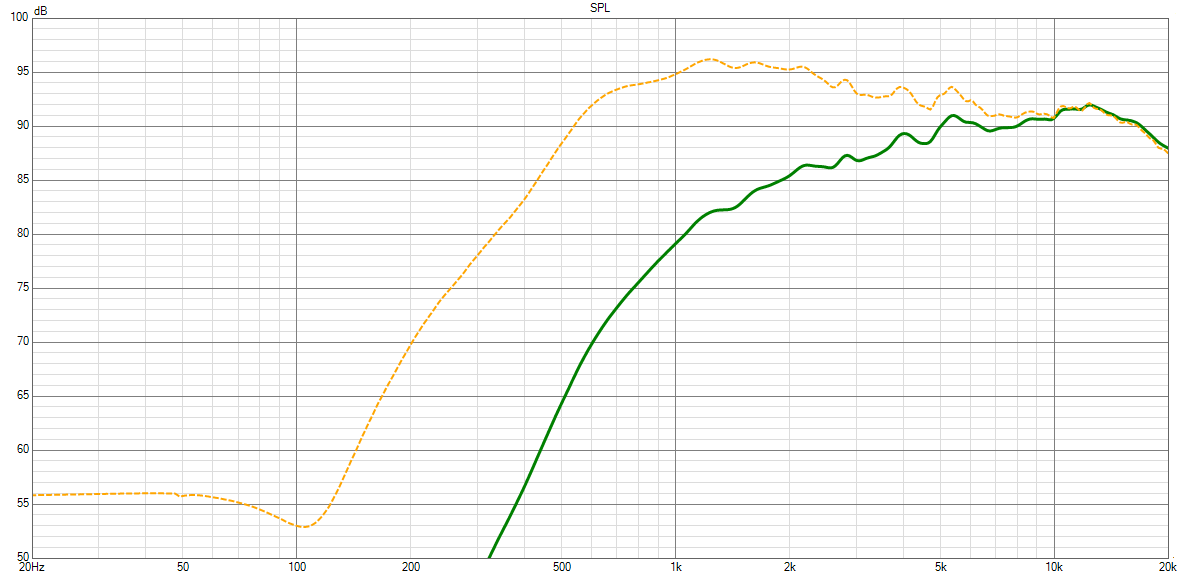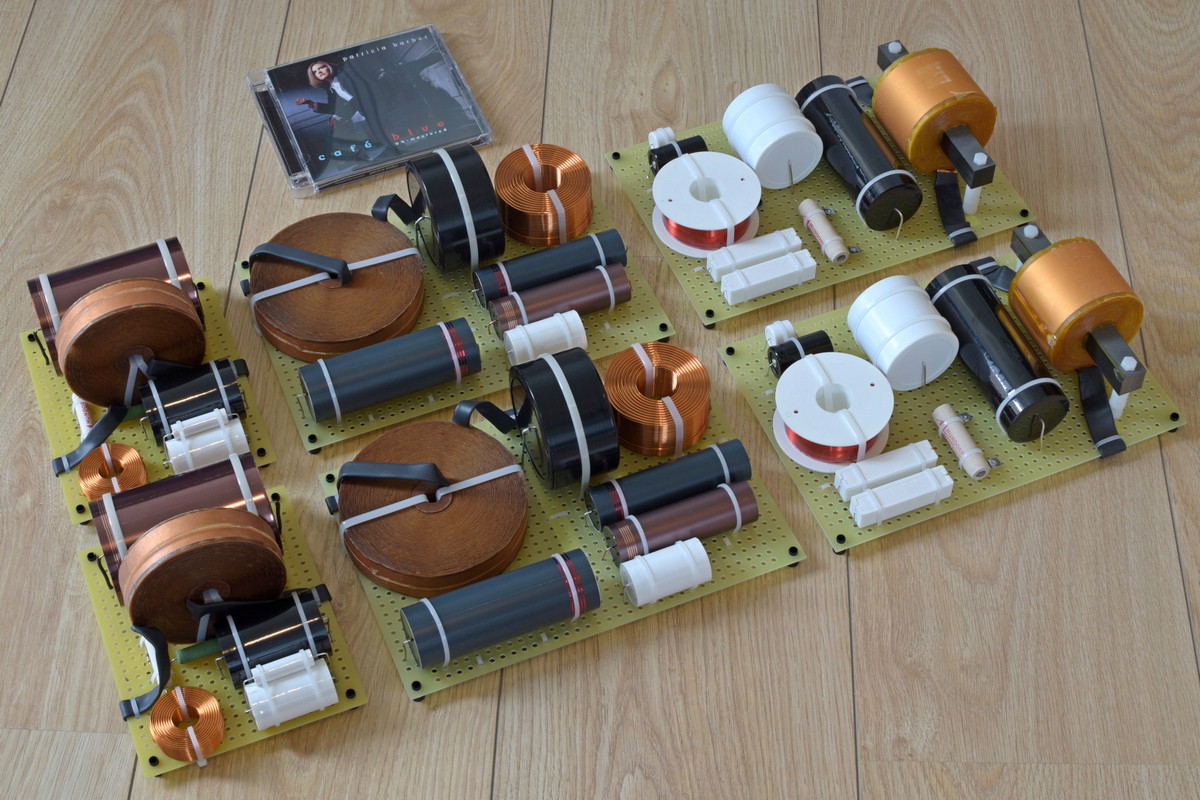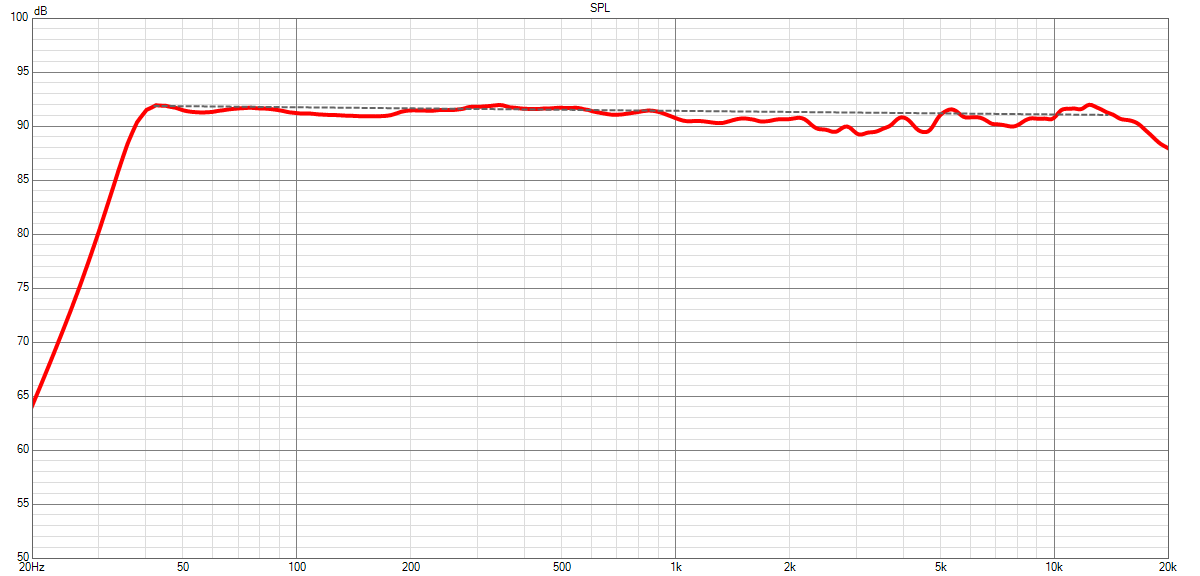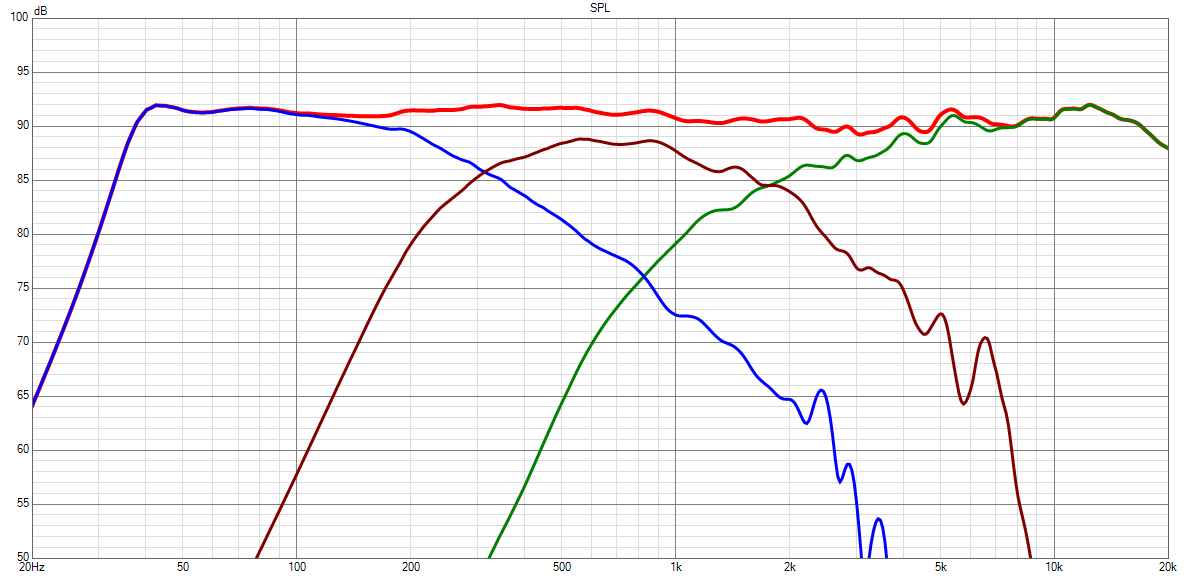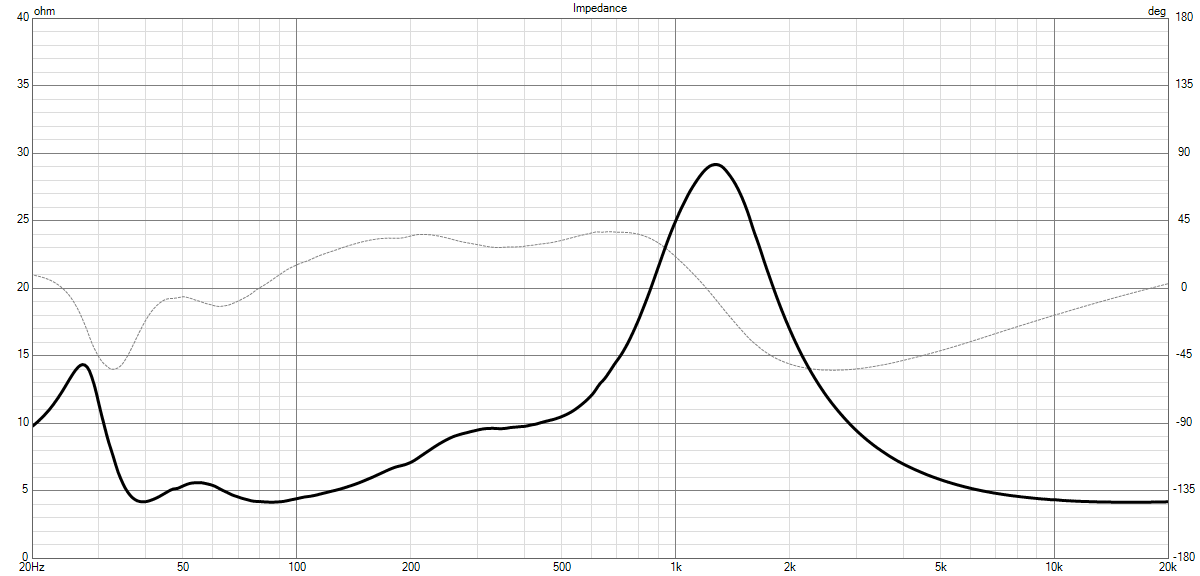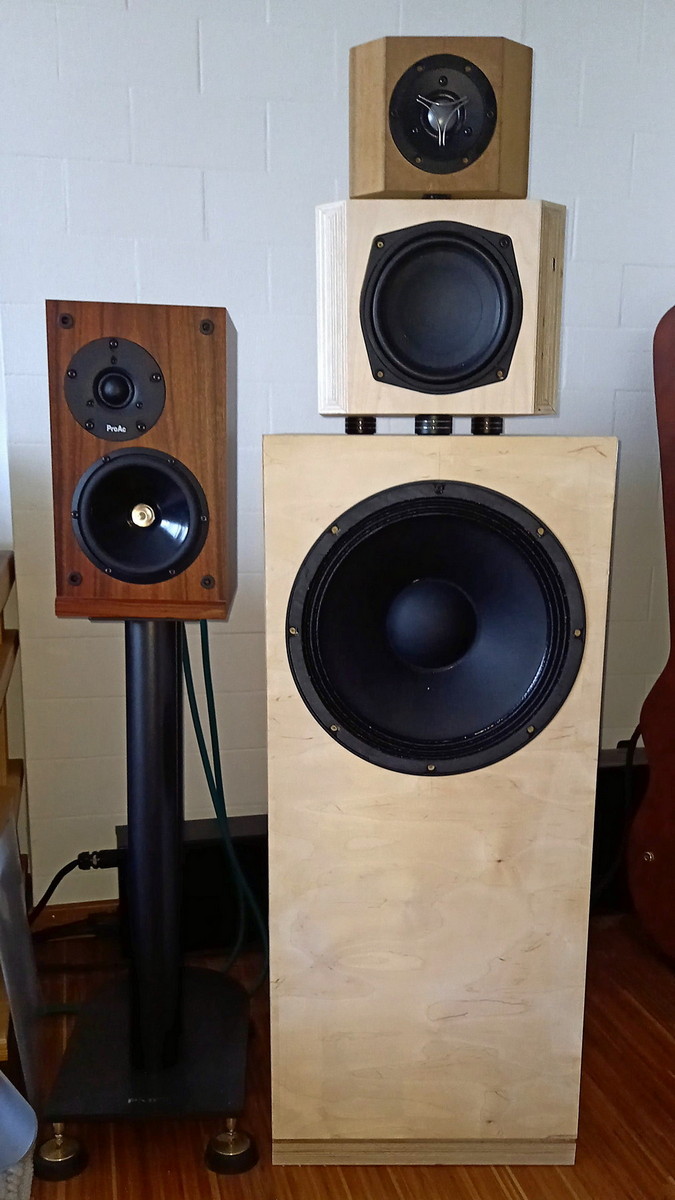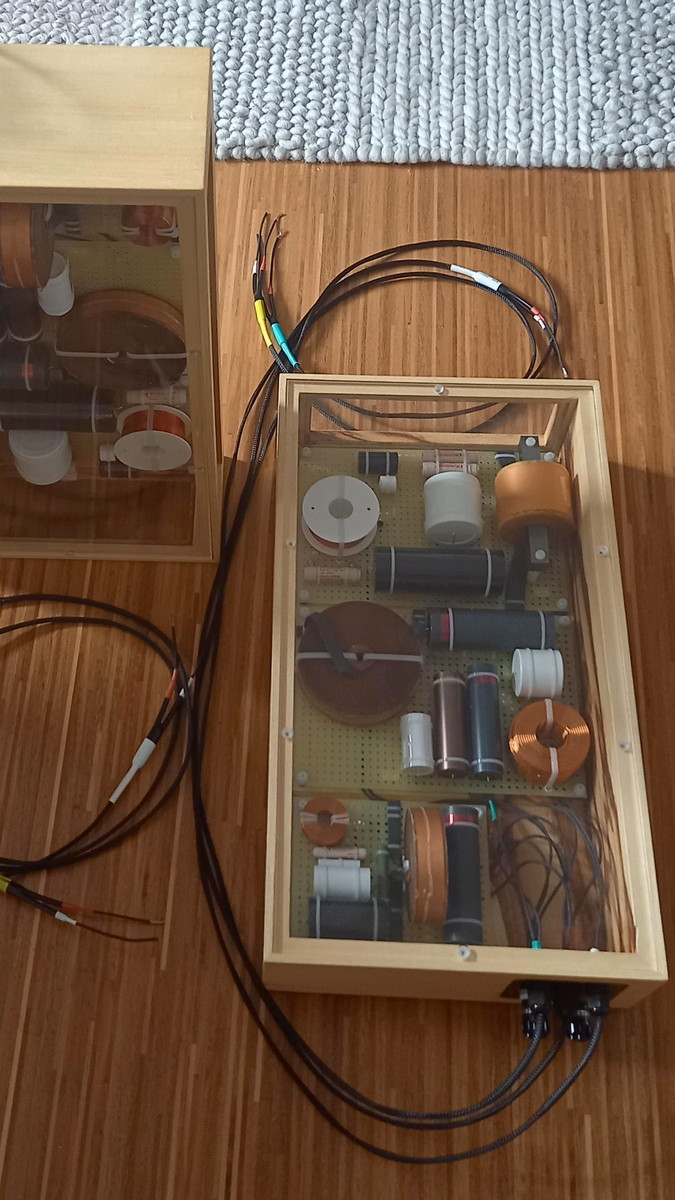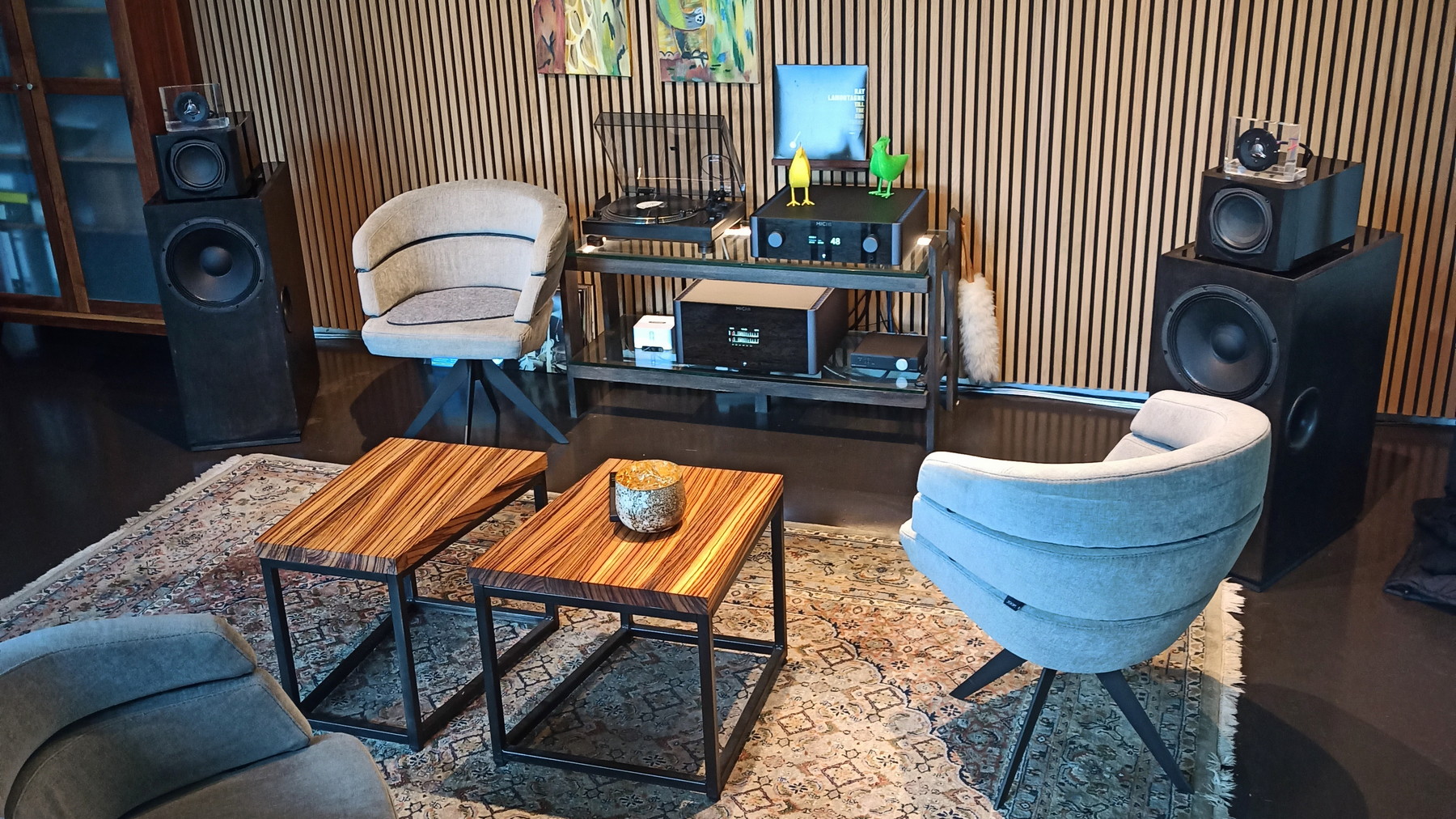|
The original Andromeda loudspeaker made it's debut back to the year 2000. Since then there have been several iterations of the design, each time based around a twelve or thirteen inch woofer, a 6.5 or 7 inch cone midrange and a one inch dome tweeter. This final version takes things to the next level, creating a loudspeaker that has been meticulously thought out in every aspect of it's design and still staying true to the original concept. Even though the visual aspect of the loudspeaker might seem similar to the original, the technical execution has been taken much further, hence the name Nova Andromeda.
Let me start out by saying that the best driver doesn't exist. Loudspeaker design is all about choosing the right driver and there are many criteria that determine which driver is suitable for the job. With the Nova Andromeda choosing the woofer size was the easy part, as you may recall I have always said that decent bass starts at twelve inches, anything smaller is basically a compromise. A fifteen inch or eighteen inch woofer would have been nice but with this design I wanted to keep the overall size compact, so a twelve inch woofer with good bass and midrange qualities had to be found. I also wanted decent sensitivity, good bass extension and a healthy impedance. There are not many woofers that can do all those things at the same time but the appropriate candidate was found in the Faital Pro catalogue.
The other end of the spectrum is for a large part personal taste but I find that hard dome tweeters match paper cone woofers very nicely. After all, the only thing that a tweeter has to do is produce the harmonic overtones of what the woofer is doing. The detailed and open nature of beryllium blends very well with the richness and smoothness of paper. The gap in between the two drivers is filled by a six-and-a-half inch paper cone midrange to create a gradual transmission in size from the larger cone area at low frequencies to the smaller radiating area at high frequencies.
In general you can mix different drivers impedances within one design, if you choose a four ohm woofer it doesn't necessarily mean you have to use a four ohm tweeter. Impedance is no more than a frequency dependant resistance and as long as the overall speaker impedance is relatively smooth and doesn't dip below what your amplifier is designed to handle, then there are no problems combining different impedance drivers. With the Nova Andromeda each driver has a different impedance, the woofer is rated at 8 ohms nominal, the midrange 16 ohms and the tweeter 4 ohms. The reason behind this is that I don't like to use resistors in the direct signal path of a driver as I find them to put the "hand-brake" on a driver's performance. I've tried many different brands and types of resistors over the years (even the very exotic types) and with no exception they all seem to restrain the performance of a loudspeaker. Resistors should be seen as a necessary evil, in correction networks you can't get around them as they determine how much correction such a network does. But if at all possible I try to keep them out of the direct signal path of the driver. So instead of using resistors to adjust the output level of the midrange driver and the tweeter to match that of the woofer, I used drivers with different impedances.
The woofer cabinet of the Nova Andromeda is identical to that of the Mezzo Calpamos. To build the cabinets I choose to use 18mm / 13 ply baltic birch plywood as this is stiffer and far more pleasent to work with than MDF. Yes, MDF does cost only a quarter of the price of high quality birch plywood but with MDF you get what you pay for: a cheap material that sounds cheap and creates terrible amounts of smelly dust when machined. To build a pair of woofer cabinets you will need about two sheets of 1250 x 2500 x 18mm birch plywood. One sheet weighs roughly 40 kg's so you will need two people to carry it. Internally the cabinet is heavily braced, the baffle is double thickness and the base is triple thickness. Together resulting in a relatively "dead" enclosure. The overall cabinet dimensions and the internal sub-divisions created by the matrix are dimensioned in such a way that they are not multiples of each other. This way, any annoying panel resonances that could occur are reduced to a minimum. Better to have a few low-level resonances than only one or two that are much higher in magnitude. Keeping the noise-floor as low as possible, I think audiophiles call it. With a total finished weight of around 60kg's per loudspeaker there is plenty of mass behind these drivers. The open view renderings (by Marcus den Boer) should give you a good idea of how the the bass enclosure is constructed, please check the 2D CAD-drawing for more exact details. At the top of this page you will find a link to the pdf-drawing of the cabinets including measurements. I choose to glue the panels together using normal white PVA wood glue. After all was dry and sanded I covered them with a layer of real wood walnut veneer, also applied with normal PVA wood glue. The plinth at the bottom is painted black to match the drivers and ports. The entire cabinet including the black plinth was given three thin coats of clear, matte varnish. The first coat is nearly completely sanded off again and is basically just to prime the walnut veneer. After the second coat is applied and given time to dry, it is sanded smooth with fine 600 grit sand-paper. Finally the third layer gives the cabinets their nice smooth surface. Each woofer cabinet is ported by means of two large 100mm internal diameter ports with large 180mm flares on the outside. The two ports are positioned mirrored one in each side panel, just below the woofer. Each port consists of an Intertechnik JetSet-100AT outer flare and an Intertechnik JetSet-100WR ninety degree bend and are all supplied as part of the kit together with the appropriate gasket sealing tape and matching black screws. When the two parts are glued together they form exactly the correct length for a port tuning frequency of just under 40Hz. The end result of the interaction between cabinet, ports, woofer and crossover create a -3dB point of 36Hz. To create an air-tight seal, gasket sealing tape is applied to the rear of the driver's chassis and the rear of the port flares. The binding-posts, screws and internal wiring are also supplied with the loudspeaker kit. To save money on the total price of the loudspeaker kit and to give you some room to fine tune to personal taste, the kit is supplied with standard gold-plated binding posts to be mounted directly in the wood and with Van Damme Blues Series Studio Grade loudspeaker cable. Both are neutral sounding and very cost-effective solutions. I could have gone all nerdy and supplied the kit (for example) with twelve WBT NextGen or Furutech binding posts, six matching binding post plates and 10 meters of Furutech Alpha S-14 loudspeaker cable instead, but that would have added at least another EUR. 900,- to the total. When working with a limited budget you have to make certain choices. Feel free to ask for other connectors and cabling if you wish, but please note that these loudspeakers have been voiced with the standard binding-posts and the Van Damme UP-OFC cable, so synergy is already top notch.
Nova Andromeda standard crossovers.
I use several different software packages for taking all the electric and acoustic measurements needed for developing, building and testing loudspeakers. For the simulations during the design stage and for the pretty images on my website I like to use the very versatile programme VituixCAD as it produces clear and easy to read graphs. The woofer low-pass crossover consists of a second-order network. There are also two impedance correction networks parallel to the woofer so that the low-pass network has a textbook function. The Zobel network C11 + R4 lowers the inductive rise towards higher frequencies caused by the voice coil inductance. The LCR-network flattens the second impedance peak above the port tuning frequency. Care has been taken to find a combination of components that maintain coherency with the rest of the crossover and bring out the full potential of the Faital Pro woofer. I have used this woofer several times in the past in different configurations and have grown to know it as having a great combination of weight, dynamics and richness of tone. Especially in combination with the Mundorf VSCU low-pass inductor with copper foil, paper and resin :-)
Woofer response without crossover (yellow dashed curve) and with crossover (blue solid curve). The midrange band-pass network is a conventional second order type. Basically it consists of just two capacitors and two inductors, there are no resistors nor any correction networks. To obtain the required (non standard) values multiple capacitors are connected in parallel. Capacitors C5 and C6 can be seen as one capacitor and C7 + C8 + C9 can also be seen as one value. The two inductors are custom wound to a specific value for this driver as they were also not available from the standard range. For optimum coherency with the tweeter network I choose to use Jantzen Audio Alumen Z-Cap and Amber Z-Cap capacitors in combination with a Jantzen Audio Wax Coil inductor for the midrange low-pass section. Here the 16 ohm impedance of the midrange driver turned out to be a cost saver as the capacitor values are half that of an 8 ohm driver or only a quarter of a 4 ohm midrange. The series inductor is larger in value than an 8 ohm midrange would have needed, but double the value of an inductor is still a lot less cheaper than double the value of a capacitor. So now you see, using a high impedance midrange driver not only creates the possibility to get away without any resistors in its network, it also saves physical space and money. For the midrange high pass inductor I choose a baked round wire type due to limitations in size and budget. If it were to be a Wax Coil it would have taken up more than half the crossover board on it's own! The high pass capacitors are a mix of Jantzen Audio Alumen Z-Cap and Mundorf EVO Silver Gold Oil as the Jantzen are only available in values up to 10uF so I would have had to use quite a few to make up the required value taking up even more space on the circuit board. Let alone the extra costs that would result.
Midrange response without crossover (yellow dashed curve) and with crossover (brown solid curve). The tweeter high-pass consists of capacitor C1 and inductor L1. To achieve high quality with rich harmonics and a realistic tone but still keep things affordable, I choose a Jantzen Audio Amber Z-Cap in combination with a Jantzen Audio Wax Coil. The series capacitor C1 is smaller than with a standard network and the inductor L1 larger than usual. Basically it starts like a first-order network and then roughly an octave lower it transcends to a second-order network. This hybrid typology combines the good phase response of a low-order network with greater attenuation and protection of a higher order network. It is also needed to modify the the tweeter's unfilterd response that gradually decreases in output level as the frequency rises. So that this high-pass functions smoothly and constantly an LCR impedance correction network had to be connected parallel to the tweeter. This network is formed by L2, C2+C3+C4 and R2+R3. Due to large component values, cost and space limitations these LCR components are more standard quality. The only resistor used to fine-tune the output level of the tweeter is the parallel resistor R1 that, due to its relatively high value, just shaves off a smidge of treble energy. I did run the crossovers without this resistor for a while but found that with prolonged listening sessions in combination with certain (poor quality) recordings things were sometimes just a little bit too bright. With there being no resistor at all in the direct series signal path of the tweeter, the overall character of the treble is still nicely pure.
Tweeter response without crossover (yellow dashed curve) and with crossover (green solid curve). High quality crossover components are physically much larger and heavier than standard quality types so the end product consists of three crossoverboards per loudspeaker, two measuring 165 x 240mm in size and one smaller 130 x 160mm board. The shipping weight for just a pair of crossovers is circa 12 kg's! There is also a custom version available with a Jantzen Audio Amber Z-Cap copper foil capacitor for the main tweeter capacitor C1. The crossovers are mounted outside the cabinets to minimize vibrations and keep them well away from the driver magnets. It is possible to squeeze the crossovers inside the woofer cabinets (on each side panel at the rear of the cabinet) but there are only a few millimeters of space to manoeuvre, so I don't advise to do this. A more elegant solution is simply to mount the crossovers on the outside of the rear panel of the woofer cabinets. You won't see them from the listening position and it will make connecting everything a lot easier. And for the few people who, for some strange reason, don't like the look of crossover components: you can always make a wooden cover to place over the crossovers. Custom crossovers with a Jantzen Audio Amber Z-Cap copper foil (far left) for tweeter capacitor C1.
Overall frequency response of the Nova Andromeda measured on the midrange's axis = listening axis, hence the roll-off above 15kHz due to the measuring microphone being positioned just under the tweeter. In-room there is no lack of fine top end detail and clarity. Sensitivity 91,5 dB / 2,83 volts; Graph range 20Hz - 20.000Hz; Vertical SPL scale 50dB to 100dB's; sub divisions of 1dB.
The individual and overall acoustic frequency measurements of the drivers with crossover. The blue curve shows the combined output of the Faital Pro 12PR320 woofer and port. The brown cruve shows the output of the Faital Pro 6RS140 midrange. The green curve shows the output of the SB Acoustics Satori TW29B-B tweeter. The acoustic crossover points can be seen at circa 320Hz and 1800Hz, to obtain this the electric crossover points are situated at circa 210Hz and 2300Hz. Frequency range 20Hz to 20kHz; Vertical scale 50dB to 100dB's with sub divisions of 1dB.
Impedance plot of the Nova Andromeda. It's nominal 6 ohm impedance and moderate electric phase show an easy load for most amplifiers. The impedance minimum is 4,1 ohms at 87Hz. Plot frequency range 20Hz to 20.000Hz; Vertical scale zero to 40 ohms with sub divisions of 1 ohm.
The Nova Andromeda produces music in a very pure and coherent manner, letting you hear very deep into the recording for hours on end. The neutral and rich presentation is combined with lots of detail and insight and is at the same time smooth to the ear. It has a pleasent balance between detail and warmth. The use of very high quality crossover components and no resistors in the direct signal path of the drivers results in heaps of information that is presented in a very natural way, nothing is exaggerated and at the same time nothing is concealed. Bass is well defined, never bloated nor slow, and is deep and has weight. The character of the Nova Andromeda is very coherent, there are no audible crossover points, the three drivers blend together seamlessly.
"Dear Tony, high time for some feedback. I am moved by the sound - almost to tears with some recordings - which is exactly how I secretly imagined it. High praise and my respect - masterly!!! Here are a few more impressions of the boxes for your wonderful crossovers. These can be admired through the acrylic glass and I also have several options for placement. I am completely satisfied with the Nova-Andromeda. With deep happiness and a great sense of thankfulness" - Manfred, Villach, Austria
"Hi Tony, the Eagle has landed :-) These are such a big difference to my old loudspeakers. Really awesome. More details, more information, more live character, superior dry bass and that straight from the workshop! I'm blown away!!" - Jens, Preußisch Oldendorf, Germany
"Hi Tony, I've been meaning to contact you since finishing the Nova Andromeda speakers and installing them in my system end of october 2022. Firstly I would like to say that the speakers are incredible and (suprisingly) on a much higher rung of the ladder than my beloved Speranzas. I could write paragraph after paragraph on how good these speakers are in every aspect, lets just say on any evening you will find me in my music room listening for hours, and yes I know this is definitely a well used cliché, rediscovering my album collection. Deep happiness. I believe the speakers and crossovers take good few months to come on song. These speakers are incredibly sensitive to any equipment changes upstream and room treatments also. On the subject of cabling I built some new interconnects just after Christmas using the Dueland single core cable and it loves these speakers. I think it's superb. I did find the Dueland interconnect took a few months to bed in by the way. I've also got the midrange and tweeter section sitting on some Black Ravioli pads on the bass cab. Big fan of Black Ravioli and use it under all my kit. Tony I'm so happy with these speakers, they are masterpieces of musical enjoyment. Thank you!!" - David, Melbourn, United Kingdom
No part of this website may be reproduced in any form without written or e-mail consent from the author. The designs are free to use for private DIY-purposes only, commercial use is strictly prohibited. Humble Homemade Hifi is a subsidiary of tg-acoustics - Chamber of Commerce 37138402 - The Netherlands
Last updated 25.5.2025 |
